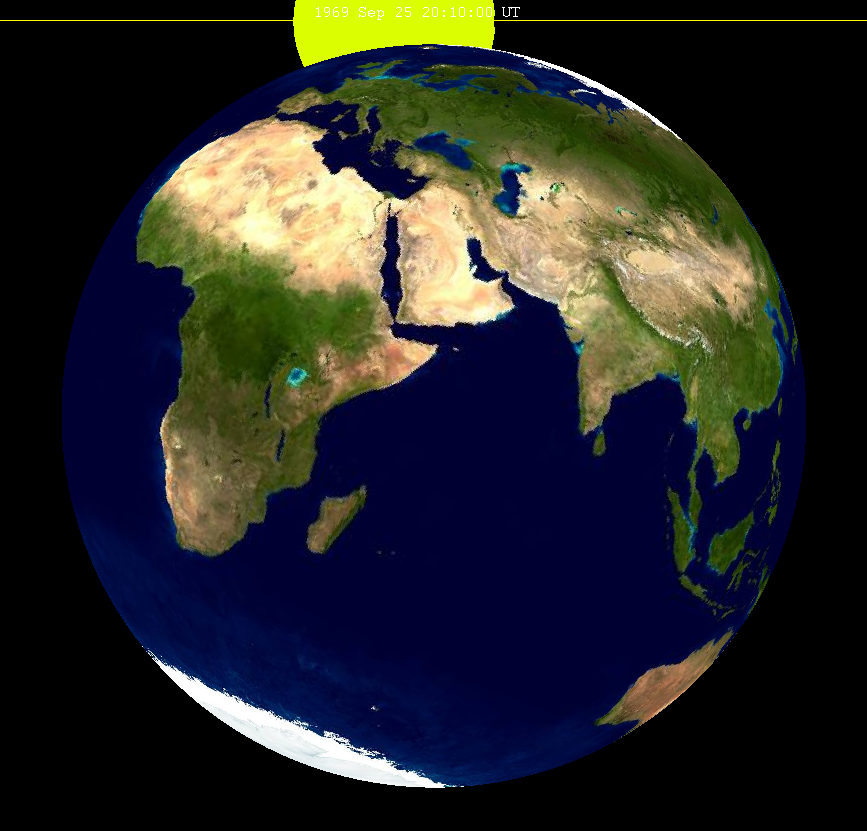September 1969 Lunar Eclipse on:
[Wikipedia]
[Google]
[Amazon]
 A penumbral
A penumbral

 A penumbral
A penumbral lunar eclipse
A lunar eclipse occurs when the Moon moves into the Earth's shadow. Such alignment occurs during an eclipse season, approximately every six months, during the full moon phase, when the Moon's orbital plane is closest to the plane of the Eart ...
took place on Thursday, September 25, 1969, the last of three penumbral lunar eclipses in 1969, the first being on Wednesday, April 2, and the second being on Wednesday, August 27. At maximum eclipse, 90% of the Moon's disc was partially shaded by the Earth, which caused a slight shadow gradient across its disc; this subtle effect may have been visible to careful observers. No part of the Moon was in complete shadow. The eclipse lasted 4 hours and 5 minutes overall.
Visibility
It was completely visible over Europe, Africa, Asia and Australia.
Related lunar eclipses
Lunar year series
Half-Saros cycle
A lunar eclipse will be preceded and followed by solar eclipses by 9 years and 5.5 days (a half saros).Mathematical Astronomy Morsels, Jean Meeus, p.110, Chapter 18, ''The half-saros'' This lunar eclipse is related to two partial solar eclipses of Solar Saros 153.Tzolkinex
* Preceded: Lunar eclipse of August 15, 1962 * Followed: Lunar eclipse of November 6, 1976See also
*List of lunar eclipses
There are several lists of lunar eclipses
On the Moon, by the Earth
; Type
* List of central lunar eclipses
* Total penumbral lunar eclipse
A total penumbral lunar eclipse is a lunar eclipse that occurs when the Moon becomes completely immersed ...
*List of 20th-century lunar eclipses
A total of 229 lunar eclipses took place in the 20th century: 83 penumbral, 65 partial and 81 total.
See also: Lists of lunar eclipses, List of 19th-century lunar eclipses and List of 21st-century lunar eclipses
List
Eclipses from 2001 to ...
Notes
External links
* 1969-09 1969 in science {{lunar-eclipse-stub